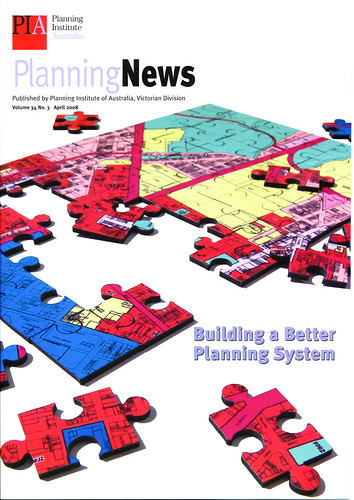 Originally published as an editorial in Planning News 36, no. 9 (October 2010), under a joint by-line with Tim Westcott and Gilda di Vincenzo.
Originally published as an editorial in Planning News 36, no. 9 (October 2010), under a joint by-line with Tim Westcott and Gilda di Vincenzo.
In his recorded video presentation to this year’s State Planning Conference at the start of September, the Planning Minister announced that the review of the Planning & Environment Act would be referred to a working group of industry representatives to resolve the outstanding issues “before the end of the year.”1 The Act Review was last sighted in draft Bill form in December 2009, but the outstanding issues, apparently, are the proposed proponent-initiated amendments, the proposed fast track / code-assess permit process, and the assessment process for State significant development. The resolution of these issues, the Minister claimed, would allow other reforms to start to flow.
The significance of this latter point was perhaps easily lost in the context of an announcement ostensibly about the Act Review. Yet in the Minister’s interview with Planning News published in this issue, it is clearer exactly how widespread a policy logjam is occurring here. Asked about the various outstanding VPP reviews – of the Residential Zones, heritage overlays, car parking controls, advertising signs, and so on – the Minister has reiterated that these are waiting on the Act Review. What’s more, he suggests that the working group for that review may even play a part in forging some consensus as to the best a way ahead on these VPP initiatives. Everything, therefore, is now waiting on the Act.


